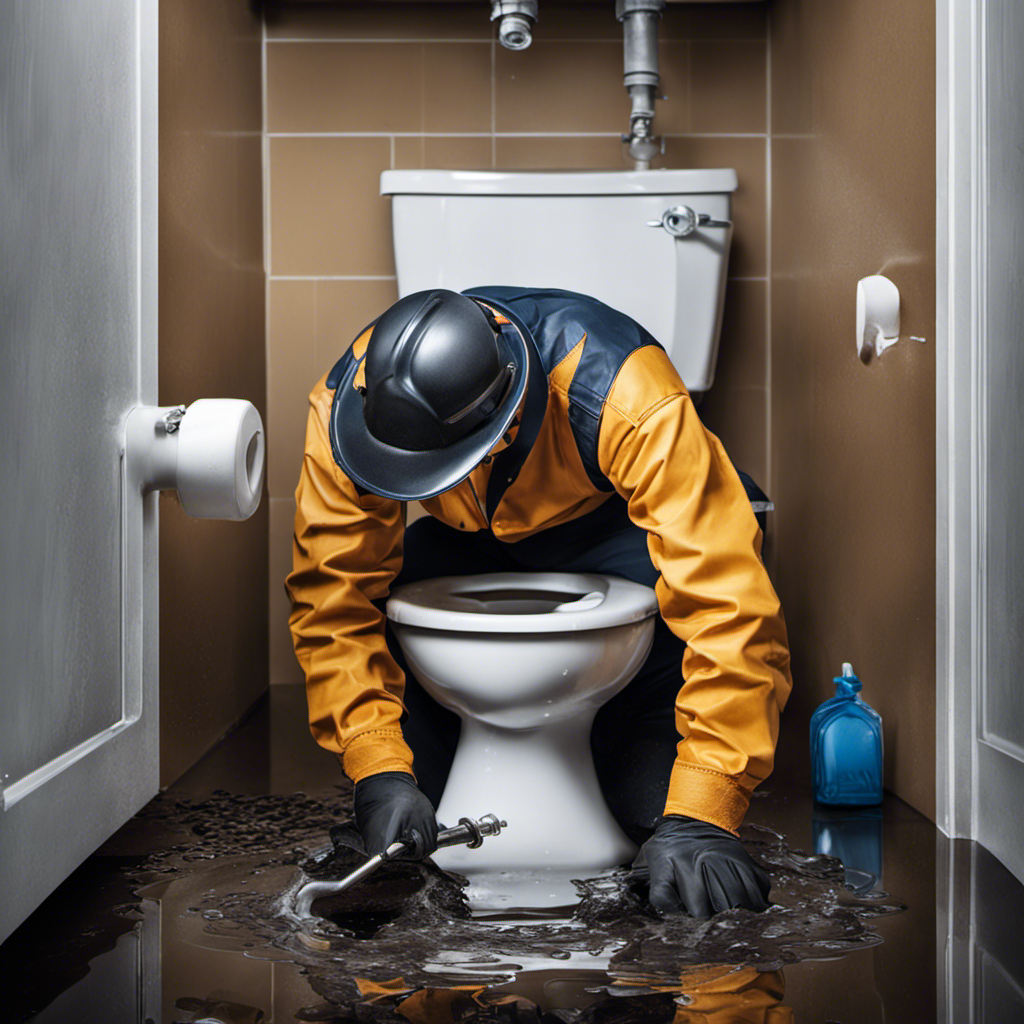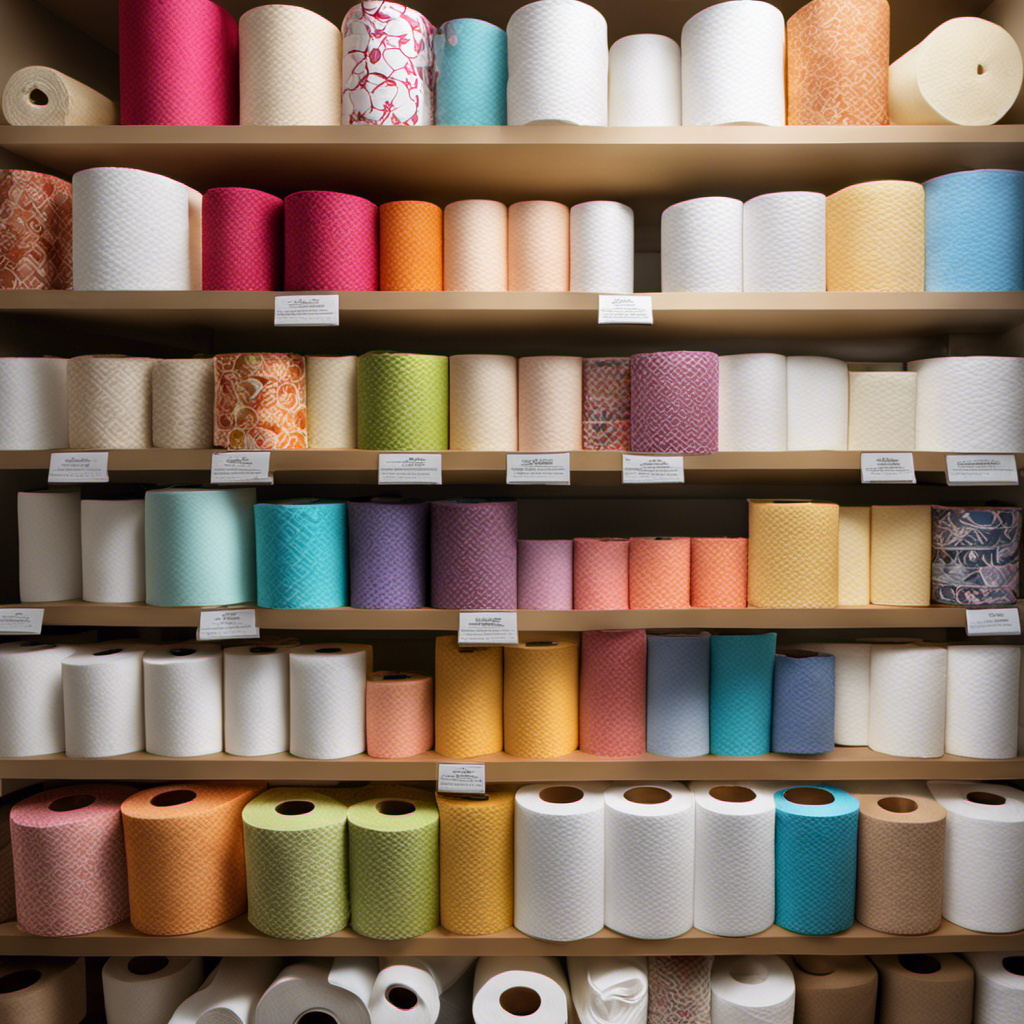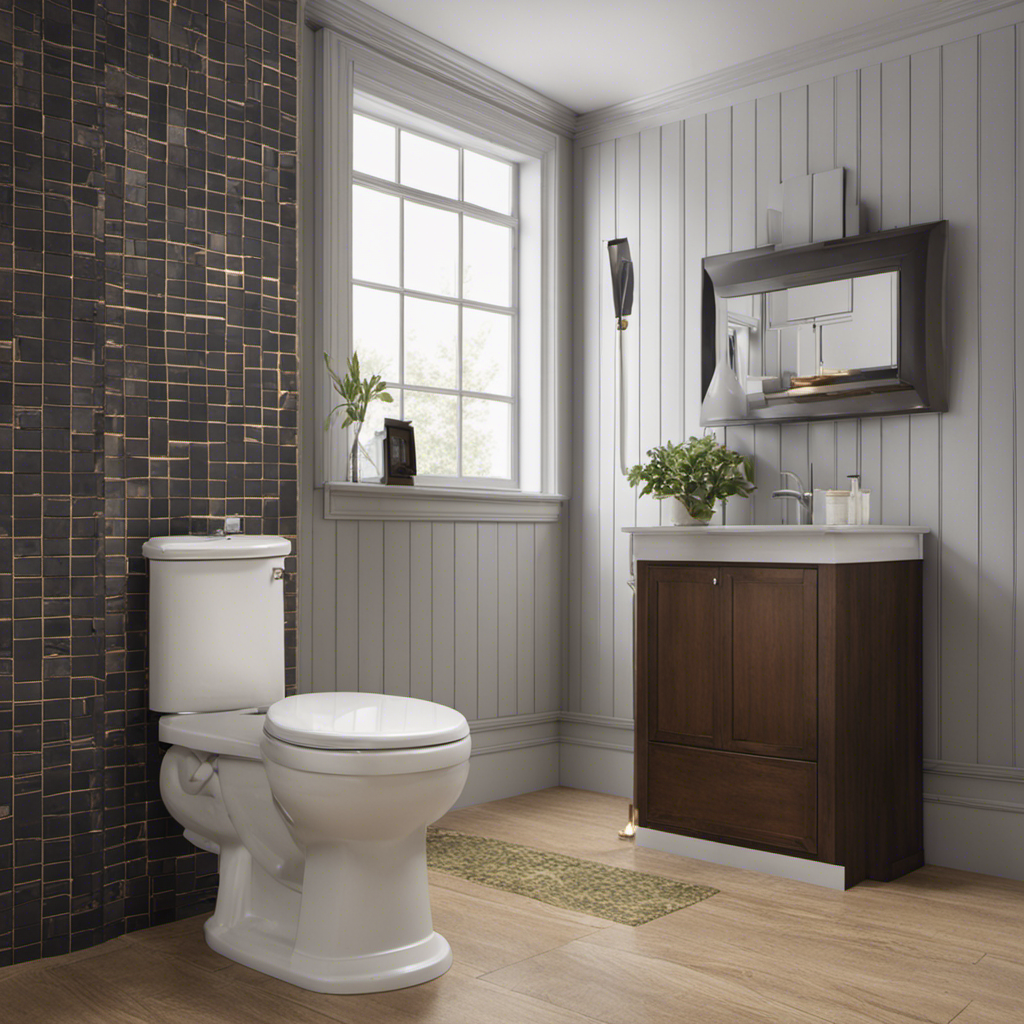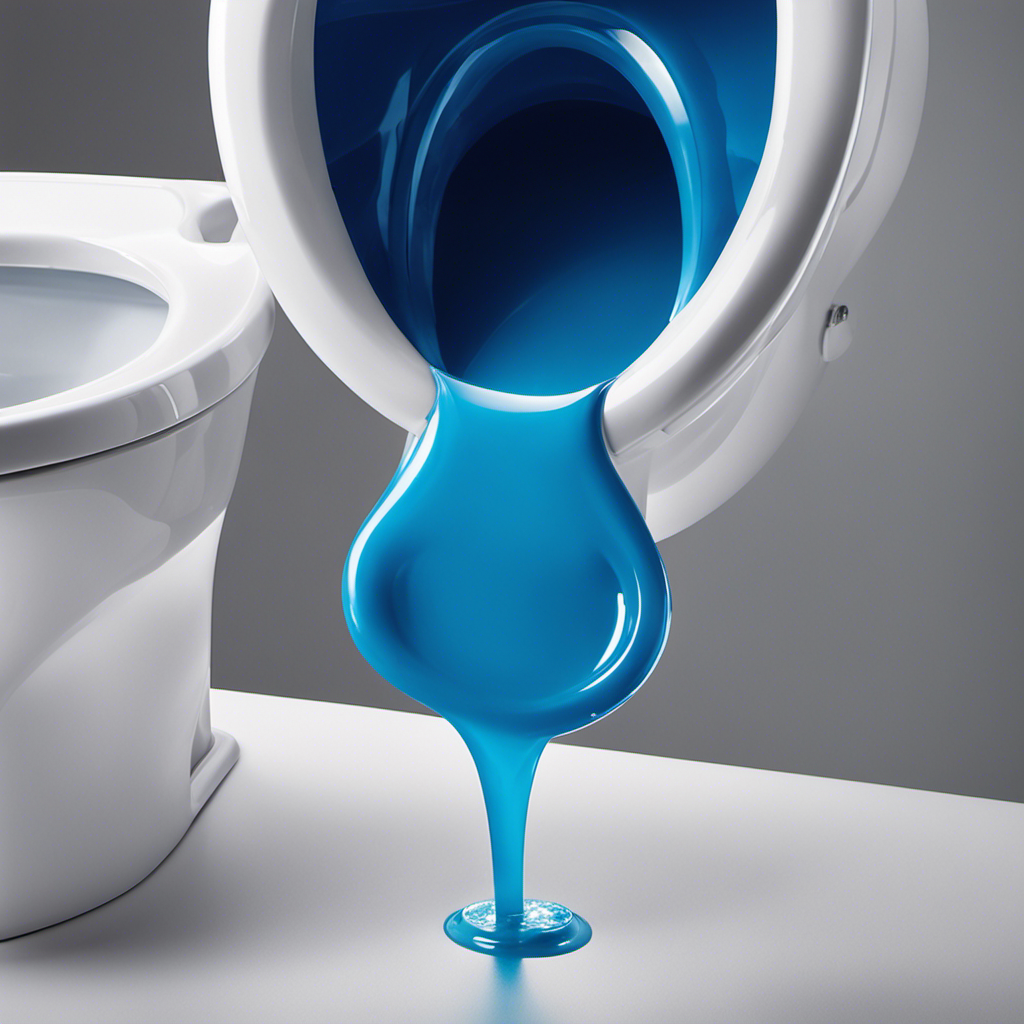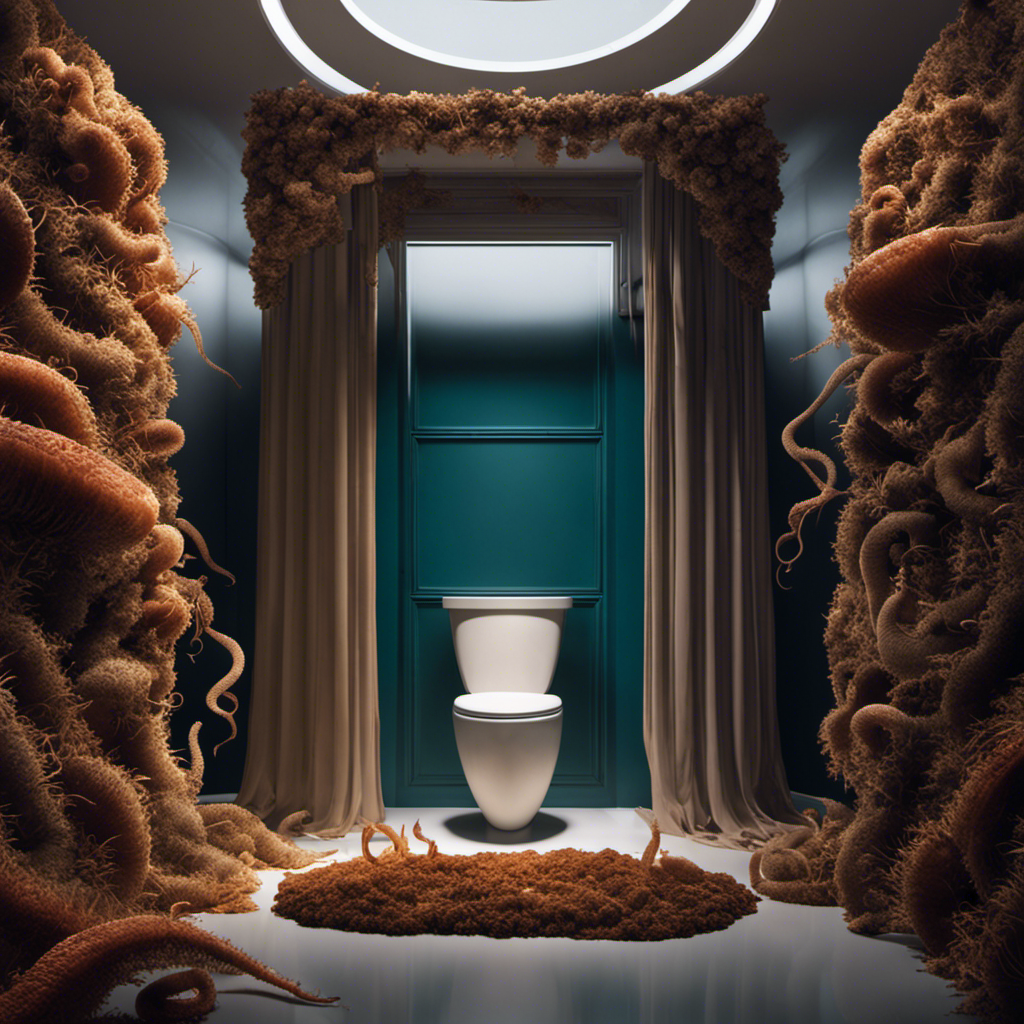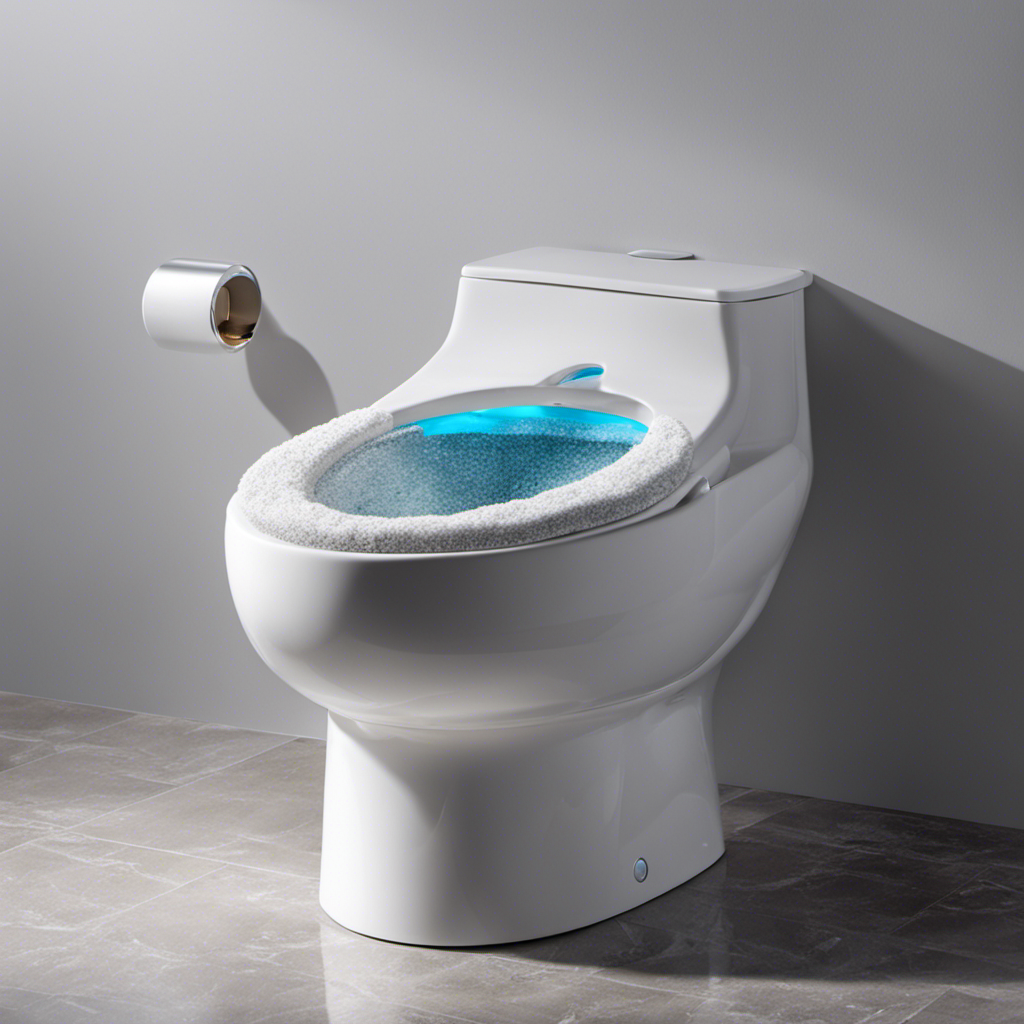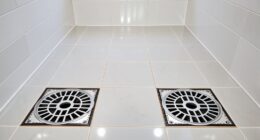Just like a leaky faucet can drive someone crazy, a toilet leak can be just as frustrating. In this comprehensive guide, readers will find step-by-step instructions on troubleshooting and repairing toilet leaks.
From loose bolts to worn wax rings, this guide covers all the common causes of toilet leaks when flushed. With a knowledgeable and technical approach, readers will learn how to find and fix these leaks, preventing further damage and water wastage.
So, let’s dive in and put an end to those pesky leaks once and for all!
Key Takeaways
- Toilet leaks when flushed can be caused by various factors such as loose bolts, worn wax rings, and leaks from the bowl or tank.
- Steps to find and fix toilet leaks include observing for leaks, patching minor cracks or replacing the bowl/tank, checking and tightening the supply line and tank bolts, and replacing the gasket.
- To remove the toilet and tank, the water supply valve should be shut off, excess water should be emptied, and the tank should be removed from the mounting bolts.
- Inspecting and replacing the flange and wax ring is important to prevent bacteria and mold buildup, avoid damage to surrounding areas, and maintain proper functioning of the toilet.
Common Causes of Toilet Leaks: Understanding the Culprits
The guide explains the common causes of toilet leaks, helping readers understand the culprits behind this plumbing issue.
Preventing toilet leaks is crucial for maintaining a functional and efficient bathroom. One of the key steps in preventing leaks is identifying hidden toilet leaks. These leaks often go unnoticed and can cause significant damage if left untreated.
Hidden toilet leaks can occur due to loose bolts between the toilet tank and bowl, worn out or damaged gaskets, or an incorrectly sized gasket. Additionally, a buildup of residue or debris on the gasket, as well as age and deterioration, can also contribute to hidden leaks.
Step-by-Step Guide to Finding and Fixing Toilet Leaks
To find and fix toilet leaks, a person can start by wiping down the toilet and observing for any signs of leakage. This step is crucial as it helps identify the source and extent of the leak.
Once the leak is detected, it is important to address it promptly to prevent further damage. One common mistake to avoid in toilet repairs is using harsh chemicals that can damage the toilet components. Instead, opt for gentle cleaners specifically designed for toilets.
Another mistake to avoid is using incorrect or mismatched gaskets. Always ensure that the gasket being used is the correct size and properly installed.
Regular maintenance and inspection can also help prevent toilet leaks. Checking for leaks, cleaning the tank and bowl to remove residue buildup, and replacing old parts or upgrading to more efficient models can all contribute to preventing future leaks.
Removing the Toilet and Tank: Proper Steps for Repair
After shutting off the water supply valve, the person can begin removing the toilet and tank by emptying them and disconnecting the water supply line. This is an important step in troubleshooting leaks and repairing the toilet. Here are some key points to keep in mind:
- Empty the toilet and tank of any excess water.
- Disconnect the water supply line to ensure a safe removal process.
- Loosen and remove the tank from the mounting bolts.
- Lift the tank and set it aside.
- Remove the bolt cap covers and unscrew the nuts holding the tank in place.
Inspecting and Replacing the Flange and Wax Ring: Essential Maintenance
Inspecting the flange and wax ring is crucial for ensuring proper maintenance of the toilet. The flange is a circular fitting that connects the toilet to the floor and helps create a watertight seal. Over time, the flange may become cracked or damaged, leading to leaks. It is important to check for any signs of wear or damage and replace the flange if necessary.
When replacing the flange, it is also essential to install a new wax ring. The wax ring creates a seal between the toilet and the flange, preventing leaks. To install the wax ring, simply place it over the flange and press down firmly to ensure a proper seal. Following these wax ring installation tips will help maintain the integrity of the toilet and prevent leaks.
Importance of Fixing Leaks Between Toilet Tank and Bowl: Benefits and Consequences
Fixing leaks between the toilet tank and bowl is crucial for preventing bacteria and mold buildup, avoiding damage to surrounding areas, maintaining proper functioning, saving water, and increasing the lifespan of toilet components.
Benefits of timely repairs:
- Prevents the growth of bacteria and mold, ensuring a hygienic bathroom environment.
- Protects the subfloor and surrounding areas from water damage, preventing costly repairs.
- Ensures that the toilet operates smoothly and efficiently, avoiding clogs and malfunctions.
- Saves water by eliminating unnecessary leakage, reducing water waste and utility bills.
- Extends the lifespan of toilet components, reducing the need for frequent replacements and repairs.
When faced with a leaking toilet, individuals may consider whether to attempt DIY repairs or seek professional help. While DIY repairs can be cost-effective, professional assistance can provide expertise and ensure a thorough and long-lasting solution. It is important to weigh the complexity and severity of the leak before deciding which approach to take.
Frequently Asked Questions
How Do I Know if the Toilet Leak Is Coming From the Supply Line or the Bowl/Tank?
To determine if the toilet leak is coming from the supply line or the bowl/tank, one should carefully observe for water dripping from the supply line and tighten the locknut if necessary.
Can a Toilet Leak Cause Damage to the Flooring or Surrounding Areas?
Toilet leaks can cause significant damage to flooring and surrounding areas if left unaddressed. Prompt repair is crucial to prevent costly repairs. DIY tips for preventing water damage include regular inspection and maintenance.
Are There Any Preventive Measures I Can Take to Avoid Future Toilet Leaks?
Preventive measures for future toilet leaks include tightening bolts, replacing worn wax rings, and checking for water drips. Common causes are loose bolts, faulty shutoff valves, and residue buildup. Regular maintenance is crucial.
Is It Necessary to Use a Specific Type of Gasket for My Toilet Tank or Can I Use a Universal One?
Yes, it is necessary to use a specific type of gasket for a toilet tank. While there are alternatives, using a universal gasket may not provide a proper seal, leading to leaks.
When Should I Consider Seeking Professional Help for Fixing a Toilet Leak?
When determining if professional help is needed for a toilet leak, it’s important to consider the severity of the leak, the individual’s DIY skills, and the ability to diagnose if the leak is coming from the supply line or the bowl/tank.
Conclusion
In conclusion, troubleshooting and repairing toilet leaks can be a daunting task. But with the comprehensive guide provided, homeowners can confidently tackle this common issue.
By understanding the common causes of toilet leaks and following the step-by-step instructions, individuals can easily find and fix these leaks, ensuring their toilets function properly.
Remember, a leak-free toilet not only prevents water wastage but also protects against potential damage to subfloors and the growth of harmful bacteria and mold.
So, don’t hesitate to take action and keep your toilet running smoothly. Happy troubleshooting!
Figure of speech: ‘Tackling toilet leaks can feel like navigating a labyrinth, but armed with this comprehensive guide, homeowners can confidently unlock the secrets to a leak-free throne, allowing their worries to flush away.’
